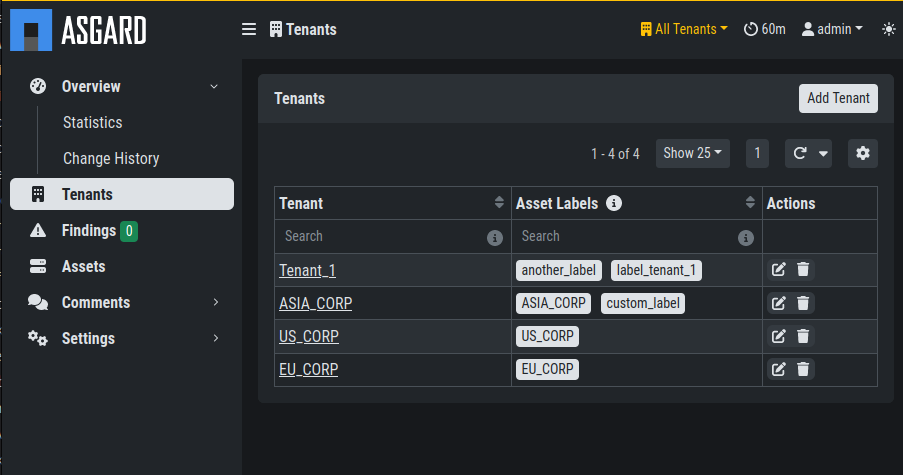4.2. Synchronization
In this chapter we will explain how data is being synchronized between the different components.
4.2.1. Synchronization between Analysis Cockpit and Security Center
This chapter contains the synchronization of data between the Analysis Cockpit and the Security Center.
4.2.1.1. Asset Data
Asset data contains endpoint related data like operating system version, IP addresses, hostname, local users (windows only) and installed software (windows only).
An endpoint is assigned to a particular tenant based on the label set in the ASGARD Management Center. It is recommended to prepare custom agent installers for every tenant with a built-in label. Please see the ASGARD MC manual for details. This is to ensure an endpoint is automatically assigned to the correct tenant and human error cannot lead to an endpoint being assigned to the wrong customer. The mapping between tenant and label can be found in the chapter Setting up your first Tenant.

Tenant Overview
An asset will be assigned to a tenant in the very first moment an asset shows up with a mappable label. Once mapped to a tenant, the asset will remain with this tenant forever – even if an asset's label is changed to another mappable label.
4.2.1.2. Event Data
Event data synchronization is defined in the Analysis Cockpit
(see Configure your Analysis Cockpit).
Once a case with the defined type has been set to the defined
status, the case data will be synchronized to the Security Center
and a Finding will be opened for all assets within this case –
regardless of the affected tenant.
As it is recommended to only synchronize events that are actionable AND fully analyzed, the default criteria for synchronization are "Incident", "Suspicious" and "Vulnerability" in regards the case type. By default, only cases with status "Closed" – which stands for "Analysis is finalized" – are synchronized. However, the service provider is free to configure this according to their needs and processes.
Important
It is not uncommon that a single case triggers multiple findings for
multiple assets and multiple tenants. As case data will be copied to
every finding regardless of the tenant, the analysts must avoid storing
tenant specific information into the cases' assessment fields, summary
fields and custom recommendation fields.